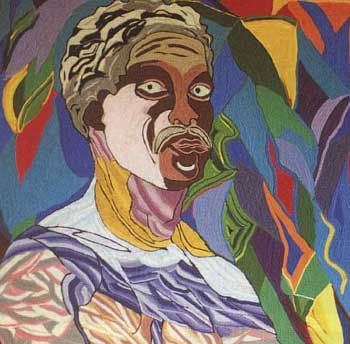The cultural importance of art in St. Lucia seems to be constantly overlooked. Art has always been considered to play the dominant role in both social and individual human development –and St. Lucia is indeed a developing nation. So… why do we fail to adequately emphasize the importance of art in our society? Art has been more successful than anything else, in restoring cultural pride in people anywhere in the world in which it is embraced; and St. Lucia is in dire need of a cultural restoration.

The French for example, possess a strong sense of cultural pride which is rooted mainly in French art and music; and they define themselves by a tradition which has been largely influenced by art in all its forms. All great societies are synonymous with the art they produce. The power of art has pervaded every aspect of human development and evolution. Religion has been taught through art, and art in turn continues to play its part in the survival of these religions. The artistic decorations in our churches and temples, the murals and the religious songs we sing are all forms of art, though we may not look upon them in that way.
Religion, which means so much to many of us, has always used the resources of art in order to appeal to our senses and to remind us of what is most important. Religious art has been used to give a sense of pride and dignity to those who adhere. Art has even been criticized by those who fail to see its true meaning for causing division and confusion. Biblical figures are represented as White in European art, and these artistic portrayals have been accused of exalting and glorifying the White race. Every artist is of course free to represent themselves or their people in works of art that tell a story with characters whose features they can only imagine. European artists have bestowed European features on the divine beings in their art, and that has in turn produced a strong sense of cultural pride in the European people.
The late Sir Dunstan St. Omer has also sought to instill similar cultural pride in the people of St. Lucia, with his representation of divinity in his murals at The Cathedral Basilica of the Immaculate Conception. Sir Dunstan understood the power of art in transforming the concepts and perceptions of people. The murals of Sir Dunstan can also be compared to the Ethiopian Orthodox Church paintings. All forms of Ethiopian art, whether religious or not, have impacted the Ethiopian people in immense ways. Art continues to shape, move and inspire us in ways that nothing else can. Whether it is a painting, a sculpture, a musical piece or a dance; and whether these art forms are intended for religious inspiration or otherwise… the fact is, their power simply cannot be denied.
We should therefore give our local art the recognition it deserves so as to encourage all of our young talents. We need more art like that of Dunstan on public display, to inspire others with the hope that their art can be exhibited for the entire world someday.













